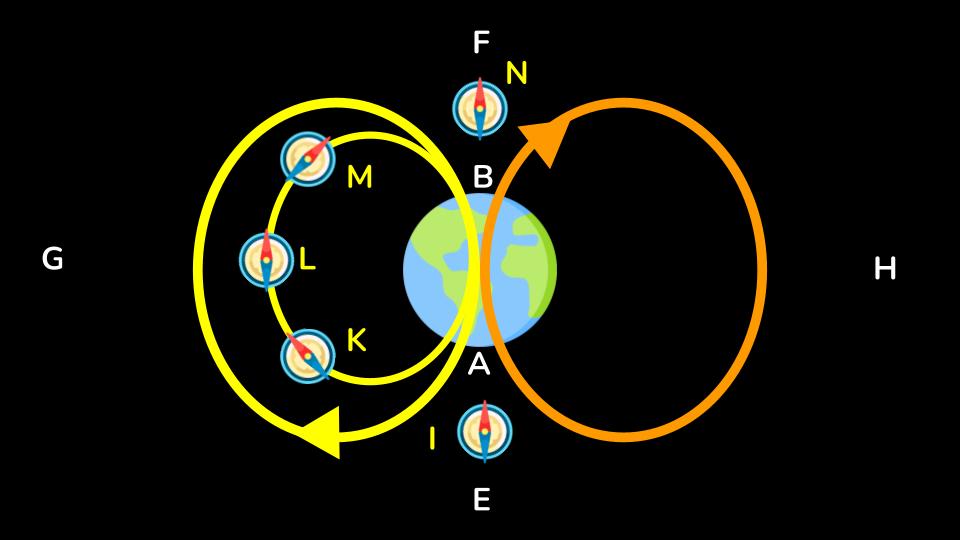How the virtual photons flow through the Earth
Table of Contents
Superphysics Note
146. How do the virtual photons flow through the paths of the Earth?
ACBD represents the Earth.
- A is the South Pole
- B is the North Pole

The small threaded particles are the virtual photons.
Some are turned completely in the opposite direction from others. This is why they cannot pass through the same pores.
Those which come from the part of the South sky E are turned in the same direction.
In the half of the Earth CAD, they have the entrances to the pores.
The virtual photons continually pass through these pores in a straight line up to the surface of its other half CBD.
From there, they return circularly on both sides through the air, water, and other bodies of the upper earth towards CAD.
In the same way, all those that are turned in the other direction come from the North F.
- They enter through the hemisphere
CBD, take their course in straight lines inside the Earth up to the other hemisphereCADwhere they exit.
From there, they return through the air towards CBD.
The pores through which they pass through the earth are such that they cannot enter through the same side by which they can exit.
147. The Earth’s central region has well-defined paths for them to flow swiftly without any hindrance
Many new particles constantly emerge from sky E and F just as an equal number of them depart through other parts of the sky G and H.
They either disperse along the way and lose their shapes through the air, water, and other substances of the Earth’s outer layers.
- These substances lack such well-defined paths.
- They encounter greater difficulty in movement.
- They frequently collide with particles of the air-aether and earth-aether which they strive to displace.
As a result, they are sometimes broken apart by these encounters.
148. They pass through a magnet more easily than through other substances of this outer Earth
But if, by chance, these virtual photons encounter a magnet in that region, they will pass through it much more easily than through the air or other substances of the Earth’s outer layers.
This is because those virtual photons find paths that conform to their shape and are arranged in the same manner as the paths of the Earth’s interior.
This is more true when the magnet’s channels have openings facing towards those parts of the Earth where these virtual photons come from.
- This allows them to freely enter through those channels.
149. The poles of the magnet
I call “South Pole” the side of the magnet where the virtual photons enter from the southern part of the sky.
I call “North Pole” the side of the magnet where the virtual photons enter from the northern part of the sky.
150. Why do these poles turn towards the poles of the Earth?
These poles do not align with the parts of the Earth where the virtual photons come from.
The virtual photons that enter obliquely into the passages of the magnet exert a force on the magnet to maintain their straight-line motion until they bring the magnet back to its natural position.
Thus, whenever it is not held by any external force, it causes the South Pole of the magnet to turn towards the North Pole of the Earth, and the North Pole of the magnet to turn towards the South Pole of the Earth.
This is because those particles that tend from the North Pole of the Earth through the air towards the South came first from the southern part of the sky through the middle of the Earth, and those that return from the North to the North Pole of the Earth come from the northern part.
151. Why do they incline towards its center?
They also cause the magnet, depending on the different locations on Earth where it is situated, to incline one of its poles more or less towards the corresponding pole of the Earth.

In the equatorial region, for instance:
- the South Pole
Aof the magnetLpoints more towards the North PoleBof the Earth. - the North Pole
Bof the magnet points towards the South PoleAof the Earth.
Neither pole is more depressed than the other, as the virtual photons approach them with equal force from both sides.
However, at the North Pole of the Earth, the South pole A of the magnet N is completely depressed, while the North pole B is elevated perpendicular to the Earth.
In the intermediate locations, the magnet M raises its pole B more or less and depresses its pole A, depending on its proximity to the Earth’s North Pole B.
This is because the Southern virtual photons enter the magnet N. It rises in a straight line through the Earth’s North Pole B from the interior parts of the Earth.
On the other hand, the Northern particles, coming from all around through the air from the hemisphere DAC towards the same magnet N, should not progress more obliquely to reach its upper part than its lower part.
However, the Southern particles entering the magnet M, ascending from the entire region of the Earth between B and M, have the force to depress its pole (a) obliquely.
They are not hindered by the Northern particles, which approach the other pole B of the magnet from the region AC of the Earth, whether it is elevated or depressed.